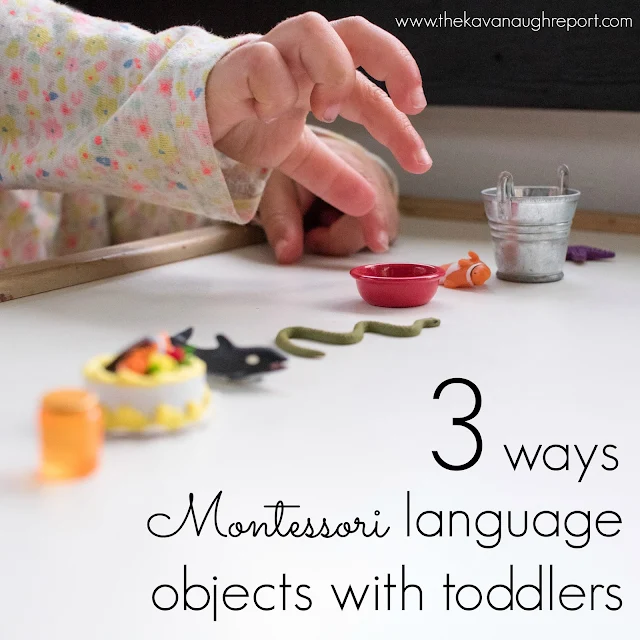It is no secret that I love Montessori language objects. In fact, I'm down right obsessed with them! And, how can I not be!? They are so incredibly cute and such an amazing learning tool. They really play to every desire in the child -- beauty, small objects, real representations. Ah! Just, I love them!
Typically, Montessori language objects are found as part of the academic work introduced to 3-year-olds to 6-year-olds. They are used in a variety of work as a child begins to learn to read.
This post contains affiliate links at no cost to you.
At home, I've noticed that toddlers are as interested in Montessori language objects as older children. In fact, they might even love them more since that sensitive period for small objects is so strong. But, what can toddlers use these little objects for?
Montessori Language Objects for Toddlers
Here are 3 ways they can be used with toddlers.
Vocabulary Building
Toddlers are also in the sensitive period for language and soak up the world around them. They love to learn the name of things. Language objects can be a good way to learn the names of some more unusual household objects, food, or animals -- depending on what you have available.
In this case, a simple 2-part lesson is a great place to start. First, you tell the toddler the name of the object. Once several objects are named, you can ask the toddler to find/give you one object at a time. It's amazing how quickly new vocabulary is picked up this way! And how much toddlers, even older toddlers, love this game. They really do soak up the vocabulary effortlessly.
Sound Games
Sound games are the first way that children are introduced to letter sounds in Montessori. While sound games warrant their own post, I will briefly say that they include playing a sort of I-spy with children. In this case you start out by holding one object. Then, you say "I-spy something that begins with ::the sound.::" But, you add the sound! The child then "guesses" by naming the object you are holding. You start with one object so there is some control of error, since there is only one choice to choose from in your hand.
Eventually, you add more and more challenge by asking a child to choose between objects. At first, this game should just be played naturally with real objects throughout the day, then you can move on to making it a more formal "game." Nora has been playing and mastering this game for awhile so sitting to play on more regular intervals is fun and engaging for her.
Rhyming Work
Finally, toddlers will hit the stage where they are very interested in sounds and words. "What's that noise?" is a common phrase in my house right now, for example. As part of this, the concept of rhyming can be formally introduced and language objects are a great way to do that.
We start with a few pairs in a special box or basket, then we start by just naming them all. Once they are named, I ask Nora to find the ones that "match" or "sound the same at the end." When she gets the first matches, I slowly add more to the box for her to choose from. This is still challenging for her but one that keeps her very engaged!
If you choose to introduce language objects to your toddler, just make sure your child is supervised or make sure you know that your child won't eat them. Also, remember to keep them as real looking as possible to feed that need for the concrete!
Have you introduced language objects? How about with your toddler? What do you do with them?










